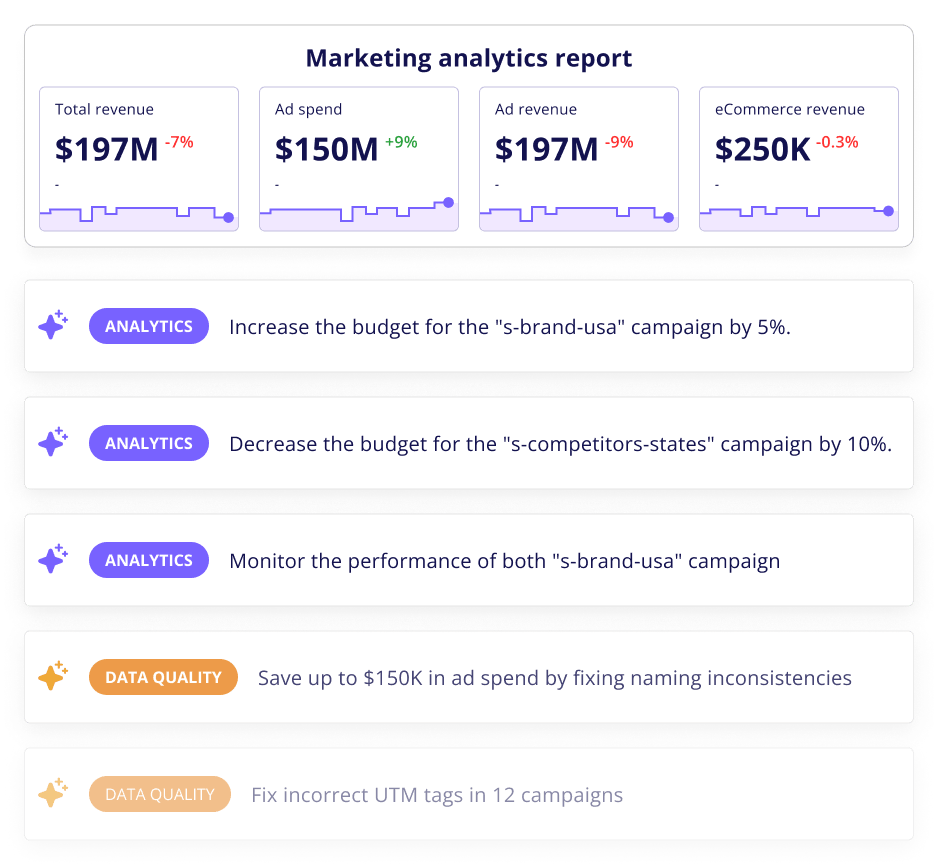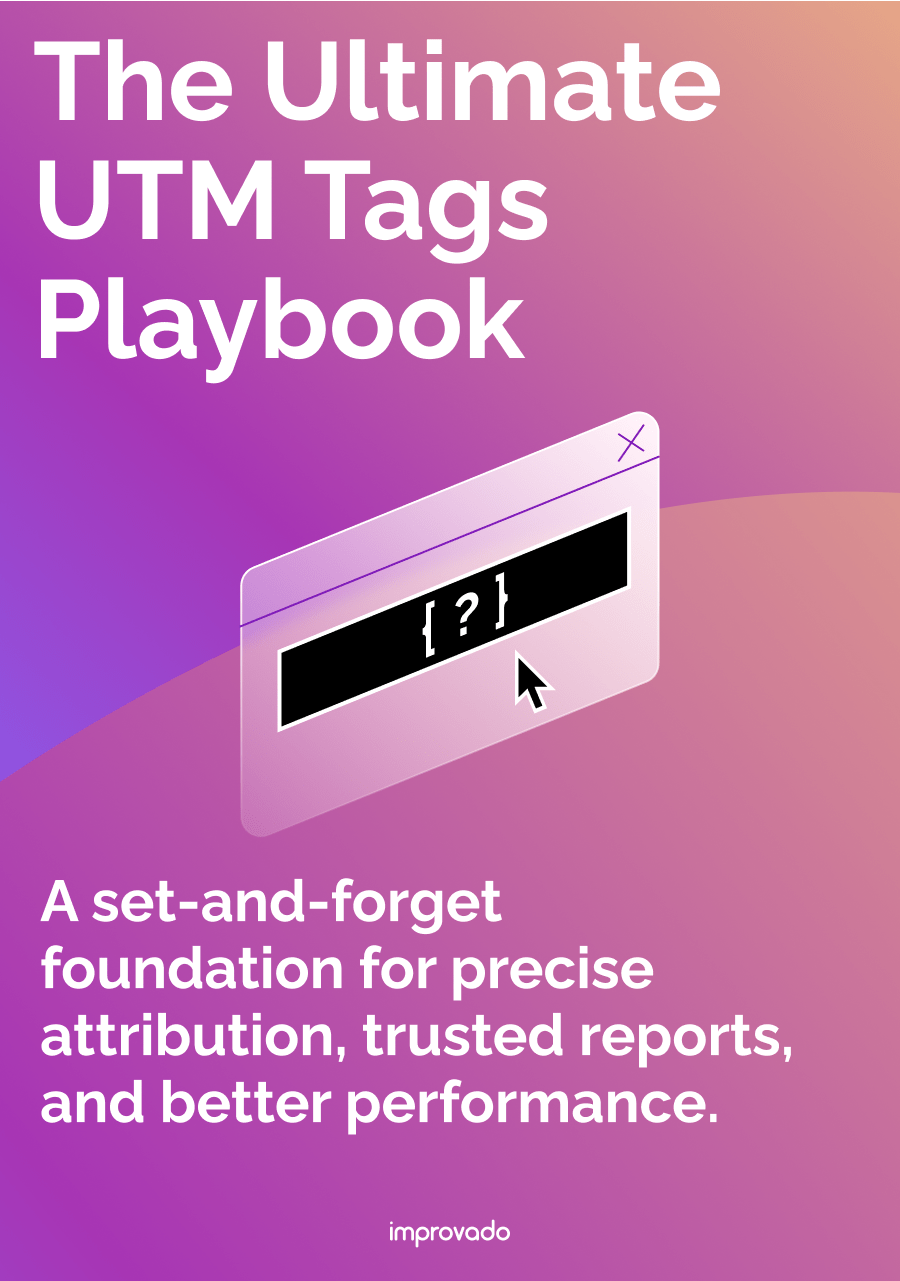Is your cross-channel analytics setup truly optimized for peak performance? A study by Ruler Analytics found that just over half of marketers are confidently tracking marketing ROI. However, even among those who track it, many miss opportunities to maximize their returns.
Whether you're looking to revamp your entire analytics approach or simply ensure you haven't missed any critical optimization opportunities, these nine battle-tested tactics will help you increase ROI with marketing analytics and extract maximum value from your investments.
Tactic #1: Geo-fencing
Geo-fencing is a location-based marketing technique that creates virtual boundaries around specific physical locations. When customers cross these digital perimeters, they can receive targeted ads, push notifications, SMS alerts, or app notifications relevant to their exact location.
Poor geo-targeting can waste up to 65% of your ad spend. While setting overly broad geo-fences (such as an entire city) is an obvious mistake, the greater challenge is to identify specific locations that correlate with purchase intent. Failing to conduct this analysis results in spending on impressions that reach people with minimal interest in your offerings.
Implementation steps:
- Analyze your customer geography: Map your highest-value customers and identify geographical patterns that correlate with purchase behavior.
- Set optimal fence parameters: Be strategic about fence size—too large will dilute effectiveness, too small will miss potential customers. Stay within a 4-5 minute travel radius for retail locations.
- Create location-specific offers: Develop promotions that address specific needs of consumers in each targeted area.
- Measure beyond impressions: Track store visits, average purchase value, and conversion rates tied specifically to geo-fenced campaigns. This can be a complex task to do manually, especially if you have multiple ad platforms in use. In this case, consider using a powerful data integration platform that will unify data from numerous sources into one convenient source of truth.
While geo-fencing helps increase marketing ROI through location-based targeting, understanding the complete customer journey is equally important.
Tactic #2: Conversion path analysis
Conversion path analysis examines the full sequence of touchpoints before clicking the “Buy” button and provides valuable insights into your most effective marketing channels.
Many marketers still rely solely on the last-click attribution model, which dramatically undervalue awareness and consideration-stage channels. When properly analyzed through multi-touch attribution, display advertising and social media can deliver much more revenue than single-touch models indicate. This means you could be severely underfunding your most effective channels while overspending on others.
Implementation steps:
- Map your customer journey: Identify all possible touchpoints across devices, channels, and their combinations that lead to conversion.
- Choose the right attribution model: Multi-touch models include linear (equal credit), time-decay (recent touches get more credit), and position-based (first and last touches get more credit). You’ll find the details in our guide on attribution modeling.
- Set up cross-device tracking: Implement user ID systems that can follow the same user across multiple devices and browsing sessions.
- Integrate offline touchpoints: Use UTM campaign tagging consistently across channels and integrate offline channels using unique campaign codes that feed into your analytics platform.
- Analyze conversion paths by segment: Different customer types often follow different paths—analyze high-value segments separately for more actionable insights.
Tactic #3: Cross-device matching (CDM)
Most users today interact with brands across at least 2-3 devices before converting. Cross-device matching identifies and connects user activity across smartphones, tablets, and computers to create a unified customer profile and journey map.
Without cross-device user matching, these fragmented sessions may appear as unique users. It can waste your budget on buying excessive impressions and severely distort campaign performance metrics.
Implementation steps:
Some options to consider:
- Enable User-ID tracking in Google Analytics 4. This means generating a unique stable ID for each user (often their account ID or a hashed email) whenever they log in or identify themselves, and sending that ID with every event/hit.
- Adobe Analytics offers robust tools for cross-device matching, evolving from visitor IDs to advanced identity graphs.
- Meta’s advertising platforms (Facebook, Instagram, Messenger) inherently use a people-based approach (each user is tied to a Facebook profile) which gives them a big advantage in cross-device attribution.
- Customer Data Platforms such as Twilio Segment, mParticle, Tealium, Adobe Experience Platform, Amplitude and others are specifically designed to collect and unify customer data across sources, making them powerful for cross-device matching.
Once you have cross-device matching data, you should integrate it into your multi-touch attribution approach:
- Unify journey data by user: Ensure that the data feeding your attribution model uses a person or unified user ID instead of device IDs or cookies. For example, if you’re doing attribution in a data warehouse, replace device-specific identifiers with the cross-device identifier (like your User-ID or an internal unified ID). This way, a path like: UserID123: mobile_ad_click -> mobile_site_visit -> desktop_site_purchase is recognized as one sequence for User123.
- Incorporate cross-device conversion paths in attribution analysis: Use CDM-enhanced reports to identify common cross-device paths and ensure your model accounts for them. For example, if many users research on mobile and convert on desktop, you might choose an attribution model that gives first-touch credit to that mobile interaction (or at least some fractional credit).
- Compare results with and without CDM: A practical step is to run attribution models on data before and after implementing CDM to quantify the impact. You might find, for instance, that Paid Social gets 10% more conversions attributed when cross-device links are made (because many users saw a social ad on one device and converted on another). This helps communicate the value of CDM to stakeholders.
- Align attribution windows and deduplication: When integrating CDM data, ensure that your attribution system doesn’t accidentally double-count. For instance, if your ad platforms (like Facebook or Google Ads) are themselves doing cross-device attribution, be careful not to add more credit on top. A unified MTA system often brings all data together and deduplicates at the user level. This typically lowers the total number of conversions attributed compared to siloed device-level attribution (because duplicates are merged), but it reallocates credit across channels.
Cross-device matching solves a critical piece of the attribution puzzle. To further increase ROI with marketing analytics, implementing cross-channel budgeting is essential.
Tactic #4: Cross-channel budgeting
Cross-channel marketing ROI depends on optimizing spend distribution across multiple channels and implementing intelligent budget pacing. The latter prevents waste during low-performance periods as well as underspends within a reporting period.
Many advertisers fail to adjust spend during nights, weekends, or seasonal low points when conversion rates drop significantly but CPCs remain high. Without automated rules and real-time spending thresholds, campaigns continue consuming budget during these inefficient periods, dramatically reducing overall campaign ROI.
Implementation steps:
Budget pacing can be as simple as having a spreadsheet (although the simplicity is arguable) or as advanced as using automated budget pacing solutions. The details and pros and cons for each option you’ll find in our guide on budget pacing. Here’s the general outline:
- Start with basic budget pacing controls: Create a simple spreadsheet to add and monitor your daily/weekly spends.
- Advance to automated monitoring: Deploy a marketing intelligence platform that consolidates spend data across channels. With its help, you can configure customized alerts based on both spending thresholds and performance metrics.
- Implement AI-driven optimization: Leverage AI to set up algorithmic budget shifting based on real-time performance.
Tactic #5: Automated insights
Automation is critical for marketers looking to increase marketing ROI without adding analytical overhead. Automated insights use AI to scan your marketing data and spot patterns, anomalies, and opportunities.
Manual analysis of marketing data is slow and error-prone. Human analysts can't process the massive amounts of data from multiple channels quickly enough, and they tend to see what they expect to see. This leads to missed opportunities and wasted ad spend. Automated systems can identify issues and opportunities in minutes that might take people days or weeks to discover.
Implementation steps:
- Start with rule-based alerts: Create simple automated alerts for key performance deviations (e.g., sudden CPA increases, conversion rate drops, etc.).
- Progress to statistical analysis tools: Implement statistical significance testing to verify which campaign changes are driving genuine improvements versus random fluctuations.
- Deploy AI-powered insights platforms: Leverage platforms that can analyze patterns across your entire marketing ecosystem and proactively suggest optimizations.

Tactic #6: Multi-touch attribution
Multi-touch attribution identifies and assigns appropriate credit to each marketing touchpoint that contributes to a conversion. It provides a more accurate picture of effectiveness of different marketing channels and activities and let you discover high-value conversion paths
In contrast, single-touch models (like last-click attribution) dramatically undervalue awareness and consideration channels that play crucial roles in the customer journey. This leads to misallocated budgets and missed opportunities.
Implementation steps:
- Choose the right attribution model: Find the details in our guide on attribution modeling.
- Ensure proper integration between analytics platforms and advertising accounts. This is quite a resource demanding step if you have a lot of tools and accounts in use. If that’s the case for you, consider implementing a solution that would integrate all your data sources and save hours of work.
- Analyze conversion paths by segment: Break down attribution by customer segments (new vs. returning, high-value vs. low-value); examine paths by product category to identify category-specific journey patterns; compare paths for different campaign objectives (awareness vs. conversion).
Multi-touch attribution provides the foundation to increase marketing ROI across all touchpoints. To maximize this impact, micro-segmentation takes your targeting precision to the next level.
Tactic #7: Micro-segmentation
Micro-segmentation uses advanced clustering algorithms to divide your customer base into highly specific groups with similar characteristics, allowing for much more personalized marketing approaches.
For example, rather than targeting all "female shoppers aged 25-34," micro-segmentation might identify a specific cluster of "urban professional women who typically purchase in the $150-200 range."
Keeping all customers in the same bucket can significantly reduce campaign effectiveness. Generic messaging fails to resonate with specific audience needs, resulting in lower engagement and conversion rates.
Implementation steps:
- Ensure your data collection is comprehensive: More detailed data allows for more precise targeting. Make sure your data integration solution captures granular customer behaviors (purchase history, browsing patterns, engagement metrics, etc.).
- Apply clustering techniques to identify natural customer groups: Use tools like Google Analytics 4, customer data platforms, or specialized segmentation software to automatically detect patterns and form micro-segments based on similar behaviors rather than just demographics.
- Validate and operationalize your segments: Create targeted messaging and offers specific to each micro-segment's characteristics.
Tactic #8: Naming convention alignment
Naming convention alignment standardizes how campaigns and UTM parameters are named across your marketing channels, ensuring consistent attribution and accurate performance measurement.
Without consistent naming conventions, campaign data fragments into incomparable segments, making it impossible to determine which campaigns truly drive results. Many large organizations spend significant marketing budgets with limited ability to track effectiveness due to inconsistent naming conventions. When your naming is inconsistent, you can't properly measure performance or optimize spend.
Implementation steps:
- Create a standardized naming structure: Develop clear rules for how campaigns will be named across all platforms and document your structure so that all team members can reference.
- Set up campaign pre-flight validation processes: Use automated tools to monitor campaign tagging before launch
- Implement real-time checks to identify naming violations in on-going campaigns, as mistakes in UTM parameters can permanently corrupt your data.
Tactic #9: KPI forecasting
KPI forecasting is perhaps the most proactive way to increase marketing ROI, as it uses data analysis and predictive modeling to anticipate future performance issues before they impact your results.
Without performance forecasting, you're constantly reacting to problems after they've already affected your campaigns. When marketing teams implement KPI forecasting, their hit rate for reaching targets can improve dramatically as they can spot performance issues early and take corrective action.
Implementation steps:
- Set up automated performance alerts: Configure threshold-based notifications for underperforming metrics and integrate alerts with your team's communication channels for instant visibility.
- Implement opportunity detection systems: Set up suggestion engines that recommend budget increases for overperforming campaigns.
- Leverage AI-powered scenario planning: Deploy specialized AI agents like Improvado's AI agent within your marketing infrastructure. Such solution can generate tailored "what-if" scenarios based on your actual campaign data or provide action plans customized to your specific business goals and constraints.
Bottom line
Implementing even a few of these nine tactics can significantly improve your marketing ROI and provide clearer insights into campaign performance. Remember that marketing analytics optimization is an ongoing process, not a one-time fix. Regularly review your analytics setup and look for new opportunities to refine your approach as technology evolves and your business grows.
Ready to take your marketing analytics to the next level? Improvado's comprehensive marketing intelligence platform can help you implement many of these tactics with less effort and greater accuracy. Get in touch today to turn your marketing analytics into a revenue-generating asset.
.png)




.png)
